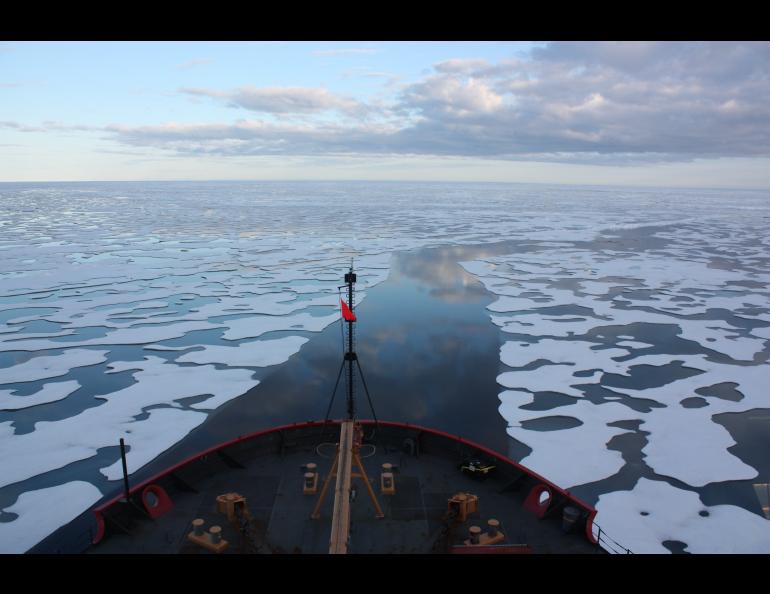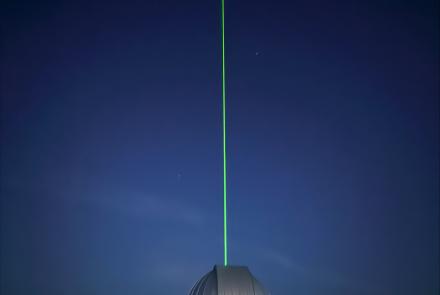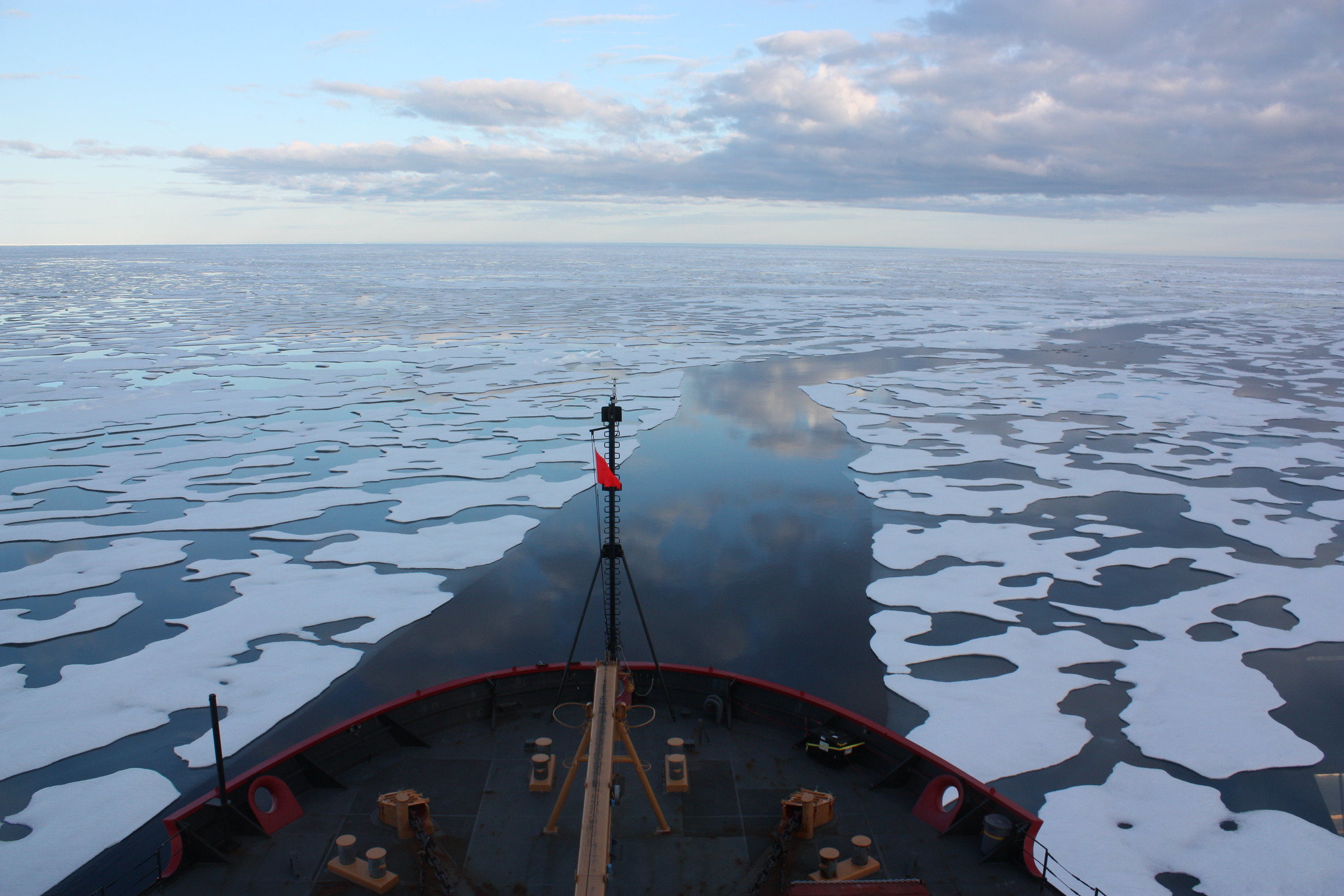The March blockage of the Suez Canal by a grounded massive cargo ship and the ensuing backlog of more than 300 other vessels brought attention once again to the alternative of shipping through Arctic waters.
Maritime traffic was already on the rise in northern waters as annual sea ice becomes thinner and less extensive due to climate change. Arctic shipping is expected to continue growing.
And with it comes increased emissions from those large vessels as they navigate northern waters in greater numbers in the summer and fall after seasonal sea ice recedes.
Looking for a way to accurately measure the impact of that vessel exhaust is the focus of NASA-funded research by Nicole Mölders, an atmospheric sciences professor at the University of Alaska Fairbanks Geophysical Institute. She began studying ship emissions in 2007 and about three years ago turned her attention to the impact of increasing ship traffic in the Arctic Ocean.
Mölders’ research, the subject of a three-year NASA grant, has shown that using data from the MODIS — Moderate Resolution Imaging Spectroradiometer — imaging sensor aboard two polar-orbiting satellites can be a reliable tool to assess the atmospheric impact of not only increased Arctic shipping but also of new oil and gas activities over the ocean and coastal areas north of 60 degrees latitude.
This first finding under her NASA grant was published in December in the Open Journal of Air Pollution.
She is now conducting additional research by using a lidar sensor aboard a third satellite to compare its data about the atmosphere to that obtained by the MODIS sensors aboard the other two satellites. A lidar sends out pulses of laser light, and the returning signals are used to determine the composition of the atmosphere.
It’s important to know whether it’s possible to measure particle accumulations due to ship emissions over the ocean — and how to do it — as Arctic shipping continues to grow. The pollution potential has received little public attention because it is generally out of view despite some of the emitted pollutants ending up in the ocean.
“The Arctic is one of the U.S. fishing grounds. That means when people eat their salmon, when they eat their halibut and they eat their cod, they get all the bad stuff that's in that fuel — through the food chain onto the table,” Mölders said.
Mölders is focusing her research on hot spots of northern shipping and on new oil and gas platform activity in the Chukchi and Beaufort Seas, northwest and north of Alaska.
She has been analyzing data of shipping in the Northern Sea Route, which gained renewed public attention due to the blockage of the Suez Canal. The Northern Sea Route, also known as the Northeast Passage, requires half the distance to connect Japan to Norway via the Arctic Ocean when compared to traveling south around China and India and up through the Suez Canal.
The Northwest Passage is similarly attractive, as it links the Pacific and Atlantic oceans by running through the Arctic Ocean above Canada, with its endpoints being the Bering Strait between Alaska and the Russian Far East and the Davis Strait, located between Canada’s Baffin Island and southwestern Greenland.
Air pollution from ship emissions hasn’t risen to a level of concern yet, but Mölders is among several scientists working in this new area of research to get ahead of the rising tide of Arctic shipping.
“This is an emerging area of research because there's a lot of things related to it,” she said. “When you have these ships, they emit black carbon, brown carbon. They emit sulfur dioxide and nitrogen oxides, which are precursor gasses for getting aerosols, and many aerosols are basically cloud condensation nuclei.”
Those aerosols are the potential problem. They not only contribute to the formation of fog, including ice fog, but also can migrate great distances. Long-term exposure to aerosols smaller than 2.5 micrometers in diameter can be harmful to health.
“Because the aerosols are airborne, when the wind blows, it transports that stuff, too,” Mölders said. “And so they can be transported by a low pressure system into the land area and precipitate out there, so they can also go into the freshwater, into the groundwater and into the food.”
The importance of Mölders’ work is borne out by an action of the International Maritime Organization to require shippers to switch vessels to low-sulfur fuel. The new rule, which was years in the making, went into effect Jan. 1, 2020, and seeks an 80% reduction in ocean-going sulfur emissions.
"The resulting reduction in sulphur oxide (SOx) emissions from ships is having major health and environmental benefits for the world, particularly for populations living close to ports and coasts,” a statement on the IMO website reads.
“Sulphur oxides are harmful to human health, causing respiratory, cardiovascular and lung disease,” the IMO says. “Once released in the atmosphere, SOx can lead to acid rain, which impacts crops, forests and aquatic species and contributes to the acidification of the oceans.”
A 2016 study submitted by Finland to the IMO’s Marine Environment Protection Committee, and cited on the IMO’s website, dramatically illustrates the potential health impact of rising sulfur emissions over the ocean.
“Delay in implementation of global sulfur limits from 2020 to 2025 would, according to the study, contribute to more than 570,000 additional premature deaths compared to the implementation from 2020,” the committee’s report on the study stated. “Health benefits are related to the proximity of coastal communities and major shipping lanes.”






